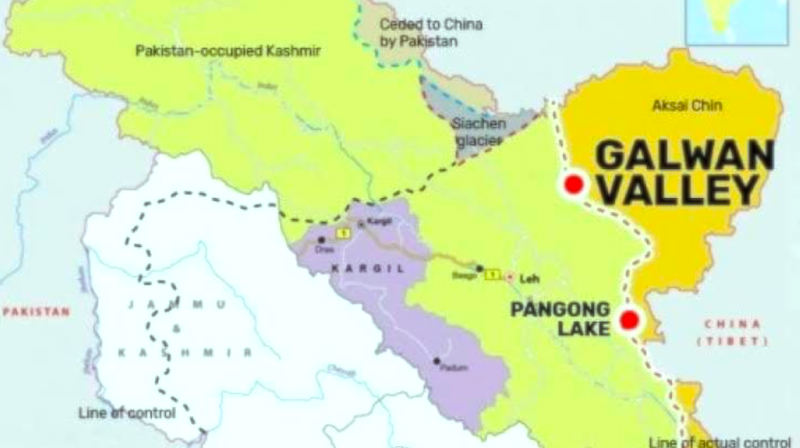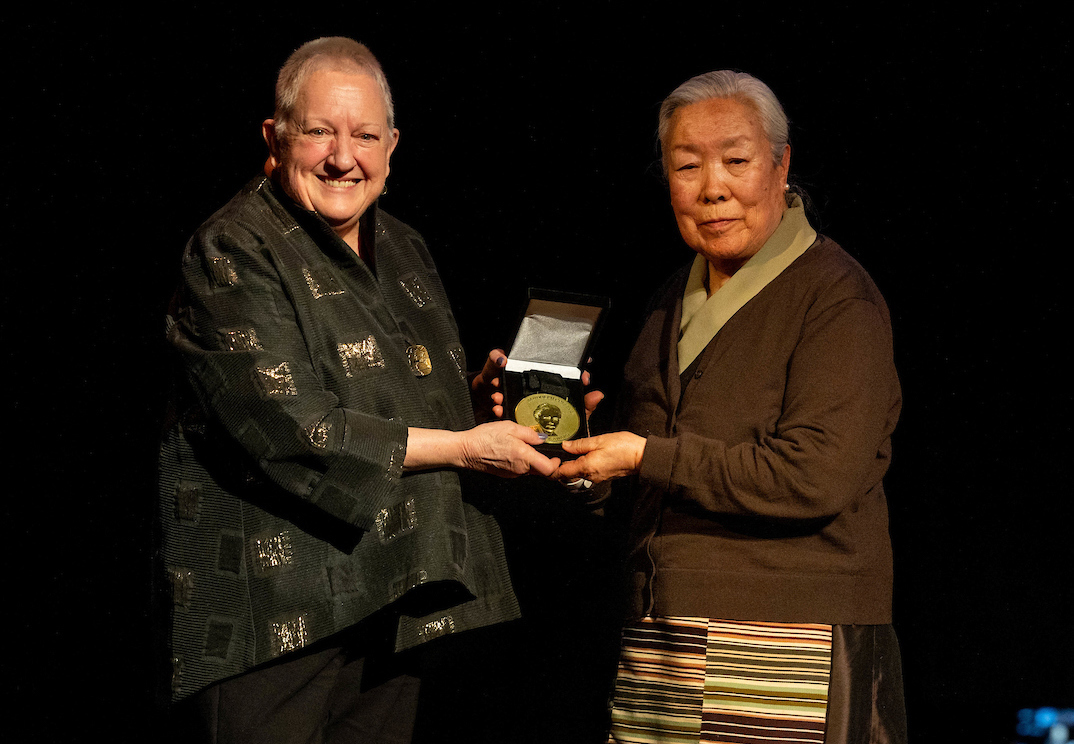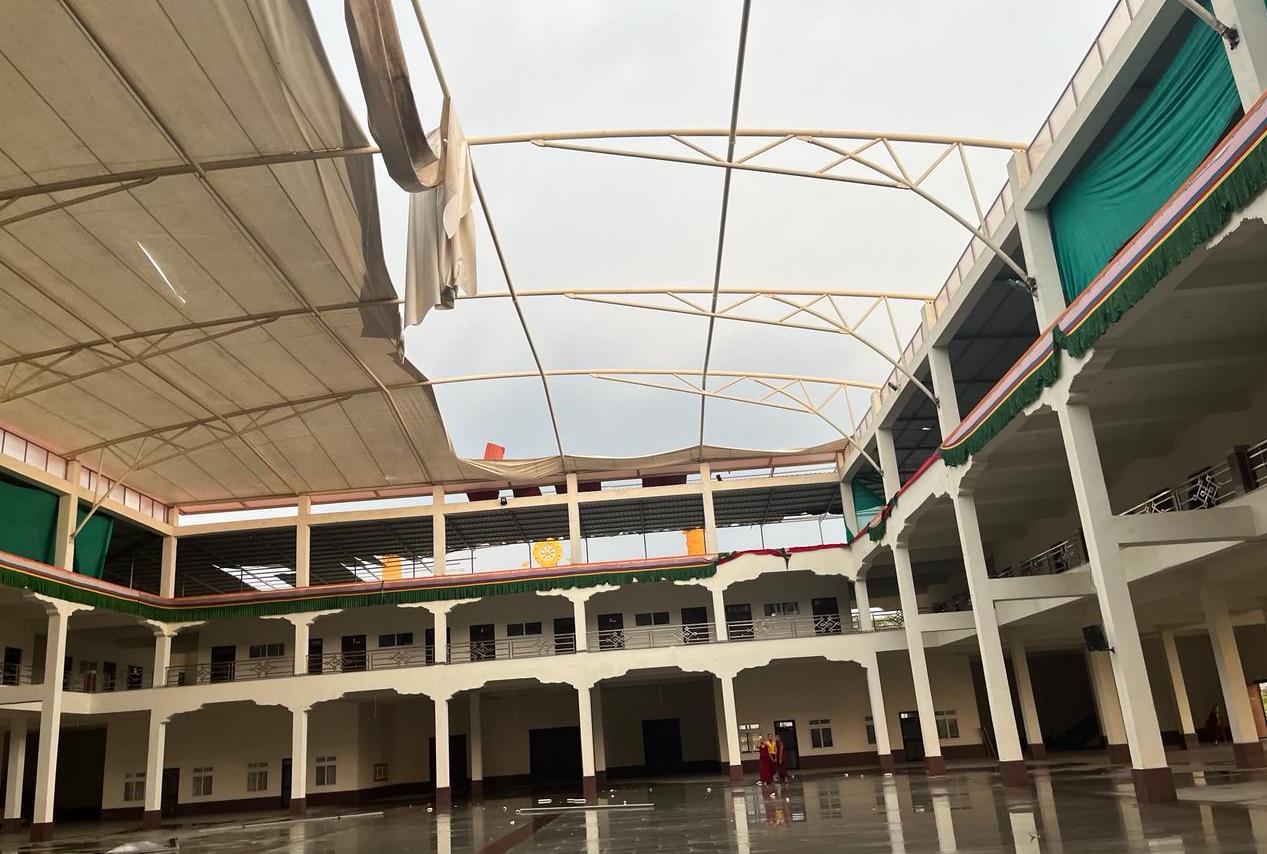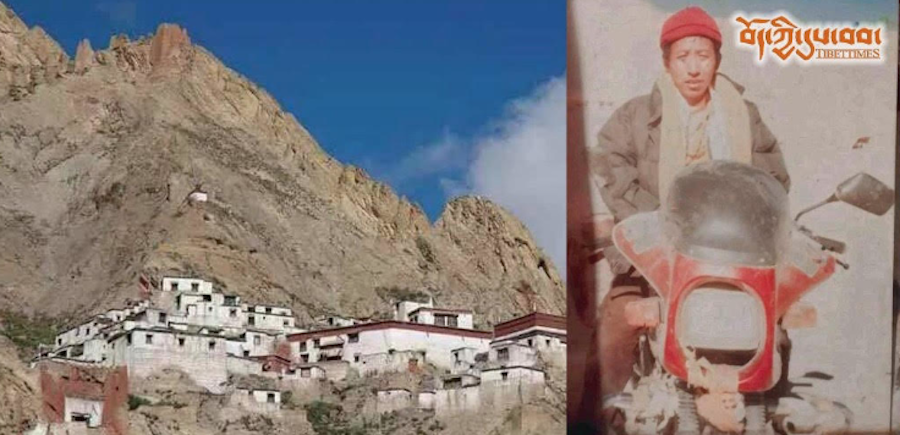By Jahangir Niaz
The disputed border between China and India cuts right through the spectacular Pangong Lake. The larger portion of the lake lies in Chinese-held Tibet, with only a small part in Ladakh in India. Expanding over a total area of 593-square kilometers, the lake is 4,242 meters above sea level, with the deepest point reaching 57 meters. From east to west, the lake is 155 km long, with an average breadth of 2-5 km. The broadest place from north to south is only 15 km. It is formed with 3 narrow lakes linked together. One highlight about this lake is that its eastern part inside China is fresh water, while the western part in Ladakh is salt water. Although the fresh water part is crystal clear and the water tastes sweet, there is only sparse vegetation on the bank. On the contrary, the salt water part has reared lush meadows on the banks.
The parts of Pangong Lake located in UT Ladakh, can be seen in quite a few Bollywood movies. The most Iconic scene, by far, is the one shown in the movie – 3 Idiots. The scene in which Aamir Khan’s Phunsuk Wangdu was seen flying a remote control aeroplane along with some kids, only to be joined by four other characters in the movie, was shot at Pangong Lake. Ever since the release of this movie in 2010, domestic tourist inflow to Ladakh increased more than fourfold, and the popularity of Ladakh due to its amazing landscape attracts lakhs of domestic tourists. The main character Phunsuk Wangdu is said to be inspired by real time engineer and education reformist Mr Sonam Wangchuk, a son of the soil of Ladakh.
3 Idiots became a cult hit, and is to this day China’s 12th favorite film of all time as measured by ratings on the film review site 豆瓣. Only one Chinese film, Farewell My Concubine (霸王别姬), ranks higher.
The starring actor of the film, Aamir Khan, posted a video on Sina Weibo to extend his gratitude to his Chinese fans for loving and admiring the film.
“In my wildest dreams, I haven’t thought that people in China would see my film and would like the film and it’ll be the start of our relationship between me and the audience in China,” Khan said in the video.
The movie was instrumental in drawing the attention of the common people in China, about the scenic beauty of Pangong Lake, only to find out that 65 percent of the total area of lake is in the Chinese occupied Tibet, while the remaining falls in the Indian side of the border. Since the Chinese official maps clearly demarcates the entire Pangong Lake as an integral part of the territory of People’s Republic of China (PRC), this has drawn a major argument from Chinese people regarding the possession of the remaining part of the Lake, which still lies with India. This has further built-up huge pressure on the Chinese officials from the common masses in China, prompting the government to engage in Geo-political tussle with India, surrounding the Pangong Lake. Besides, China has mega projects in the pipeline for Pangong lake and surrounding areas, foreseeing the prospects of tourism in the Chinese side of the lake.
“3 Idiots” has been a mega booster for domestic tourism in Ladakh, which is quite apparent if we compare the figures of the tourist inflow in Ladakh in the past one decade. In the aftermath of the popularity of this Bollywood movie, Ladakh has hosted millions of domestic and international tourists. The scenic presentation of the Pangong Lake and the iconic “Rancho’s School”, has left the digital space bustle with breathtaking images of the Lake, however, this completely excludes the images of the Pangong which falls in the Chinese side of the border. Furthermore, the Chinese citizens are barred from visiting the Pangong Lake from the Indian side. Due to security reasons, the Inner-line permit, which is a must to visit the border areas of the Indian territory including Pangong Lake, is not issued to Chinese passport holders, which is another irritant for the Chinese people.

The recent infrastructural development in the bordering areas of Pangong Lake by China, and the strategic conflict with India, in other way is the Chinese tactics to create a turmoil along the Indian side of Pangong Lake, which would directly hamper the local economy of Ladakh, which is mainly dependent on tourism. Despite the truth that China occupied Akshai Chin in 1962, the dragon is eyeing on Pangong, aiming to turn the area into a conflict zone and to culminate the inflow of Tourists in the region.
It’s high time for the government and people of India to come forward and make Ladakh one of the biggest attractions on the global tourist map. The Indian government could use the promotion of tourism in the region as a key instrument of its soft power diplomacy in order to contain the Chinese excursion and to show them, how things are normalised. We Ladakhi people are very hospitable in our bones, having rich history of ancient silk route trades. For centuries, the people of Ladakh have hosted traders from the plains of India, to traders from far-off Eastern-Turkistan (Xinjiang). At the same time the people of Ladakh are warriors too, and they have been fighting shoulder by shoulder with our army in 1947, 1962 and during Kargil war in 1999.
Jai Hind
(Views expressed are his own)
The author is an entrepreneur and a Ladakhi writer living in Leh town of newly made Union Territory of India, suffering from Dysarthria.











One Response
RECENTLY VISITED LEH LADHAK AND PAGONG LAKE , VERY MESMERASING, ALL INDIAN SHOULD VISIT ONCE IN THEIR LIFETIME